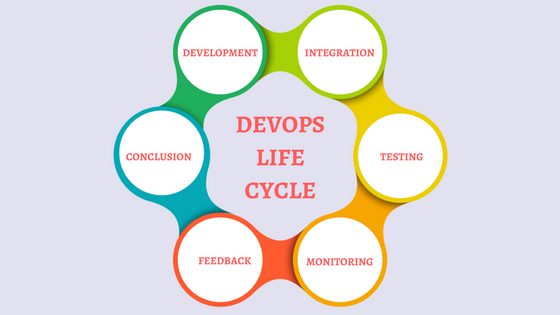A combination of Development and Operations, the term DevOps describes a software industry practice of combining the important functions of developing and operating software applications through unified platforms. Since this concept describes the entire lifecycle of software applications, it consists of various important phases. Here, we discuss some important DevOps Lifecycle Phases to help you understand this important software integration concept:
Learn DevOps
Continuous Development
The first phase of using the DevOps principle is to plan your application. This occurs when you create a set of achievable objectives that must be delivered by the application that you are developing. Once these objectives are finalized, you carry out the project development. This includes activities like generating the required code, and then putting it to the next phase. As DevOps follows a continuous lifecycle, the development may also occur on an existing code, by using the continuously available feedback in this development and operation scheme.
Continuous Integration
The continuous integration is the process that naturally occurs after the development. The integration includes several steps, like planning the various tests that are going to be carried out in the next phase, as well as understanding whether the developed code can produce the desired operations as required in the initial project documentation. The integration is a seamless process in DevOps which then leads to the next phase in an efficient manner.
Continuous Testing
Testing is a process that coincides with the actual use of the application in the DevOps. Consumers or beta testers can produce results while still ensuring that the application can have its intended use in a live environment. The testing provides further information about different aspects of the application, which in turn, can again be sent to the development process to improve the application.
Learn Ansible
Continuous Monitoring
The operational phase in DevOps is actually the phase of monitoring, where key information about the use of the application is recorded and carefully processed to find out trends and identify problem areas. The monitoring is usually integrated within the operational capabilities of the software application. It may occur in the form of documentation files or produce large-scale data about the application parameters when it is in a continuous use position.
Continuous Feedback
The application development is consistently improved by analyzing the results from the operations of the software. This is carried out by placing the important phase of continuous feedback between the operations and the development of the next version/improvement of the current software application.
The continuity is the essential factor in the DevOps as it removes the redundant steps that are often required to take a software application from development, using it to find out its issues, and then producing a better version after several months. It kills the efficiency that may be possible with the application and reduce the number of interested customers.
Conclusion
DevOps is certainly an excellent way of carrying out application development. It significantly improves the business performance of applications and allows the end users to directly contribute to the application development process, by sharing relevant feedback from the operational phase. It is a method that we will continue to see in the future as a top option for developing dynamic applications that constantly evolve to meet new challenges.






